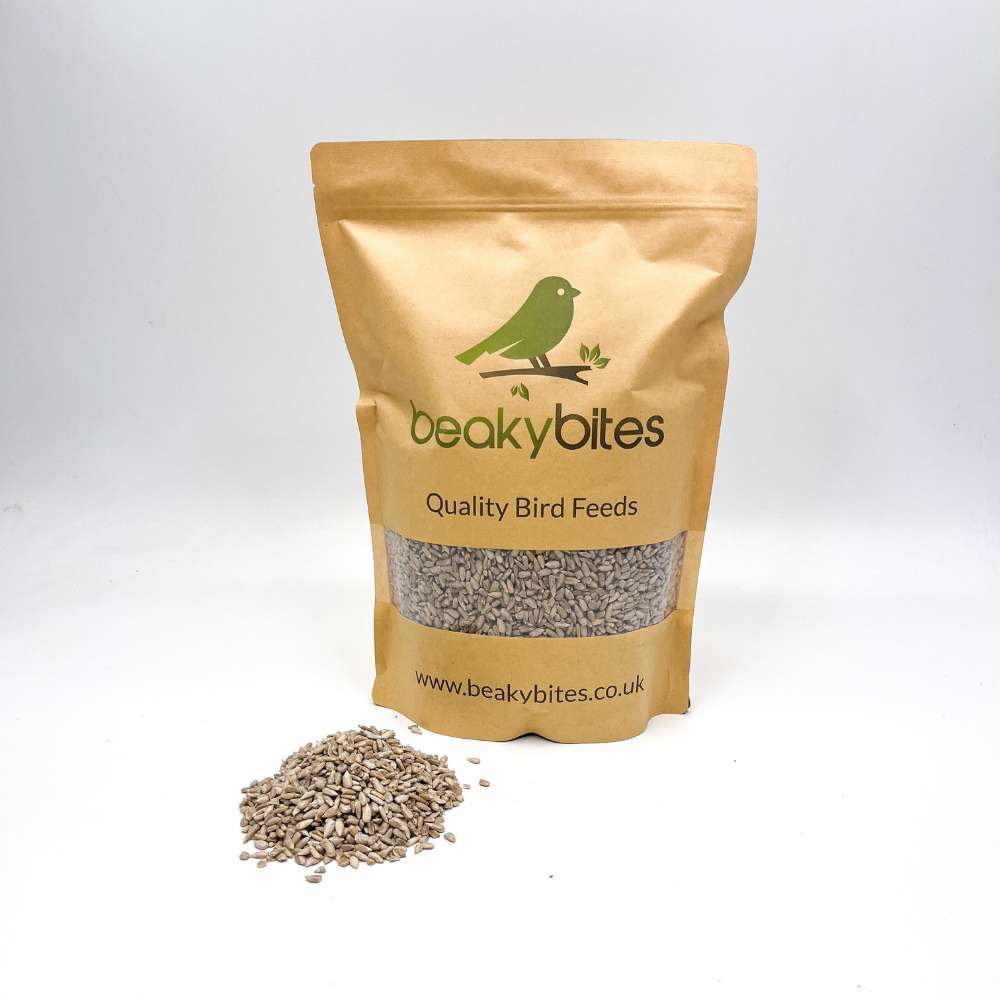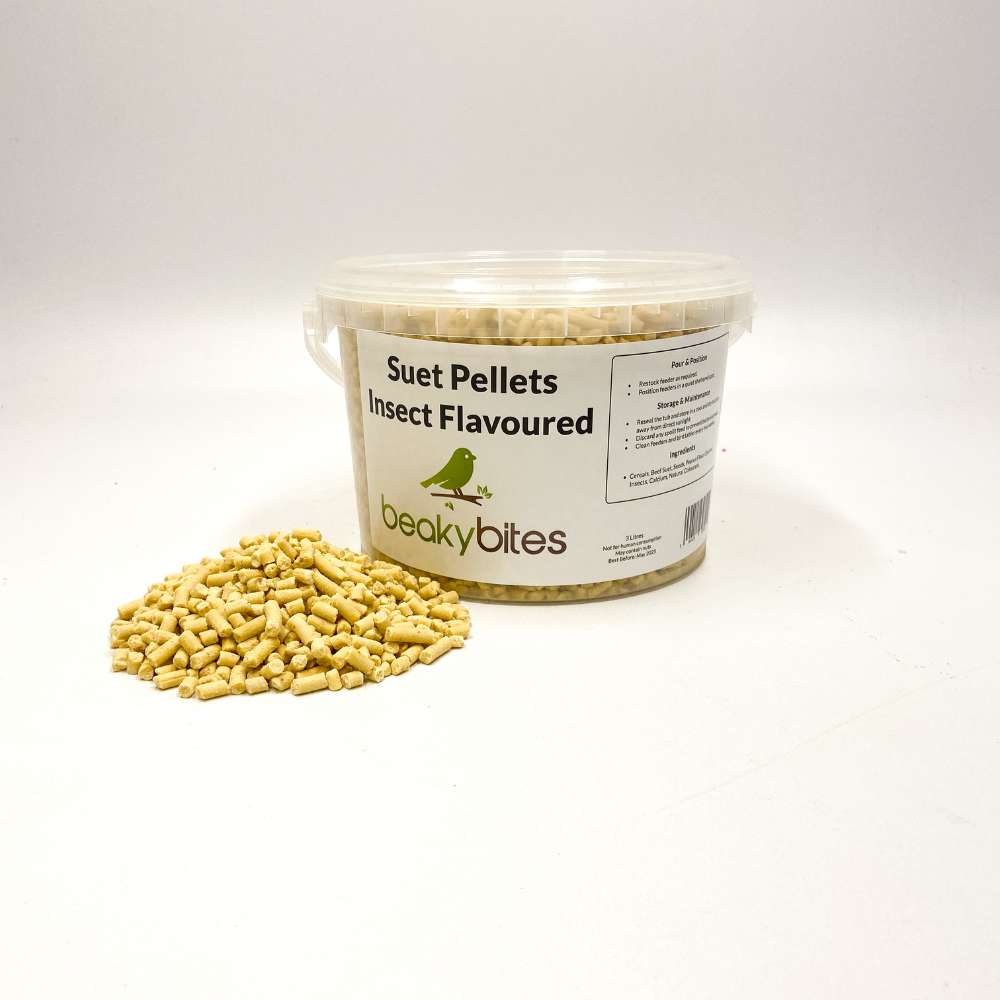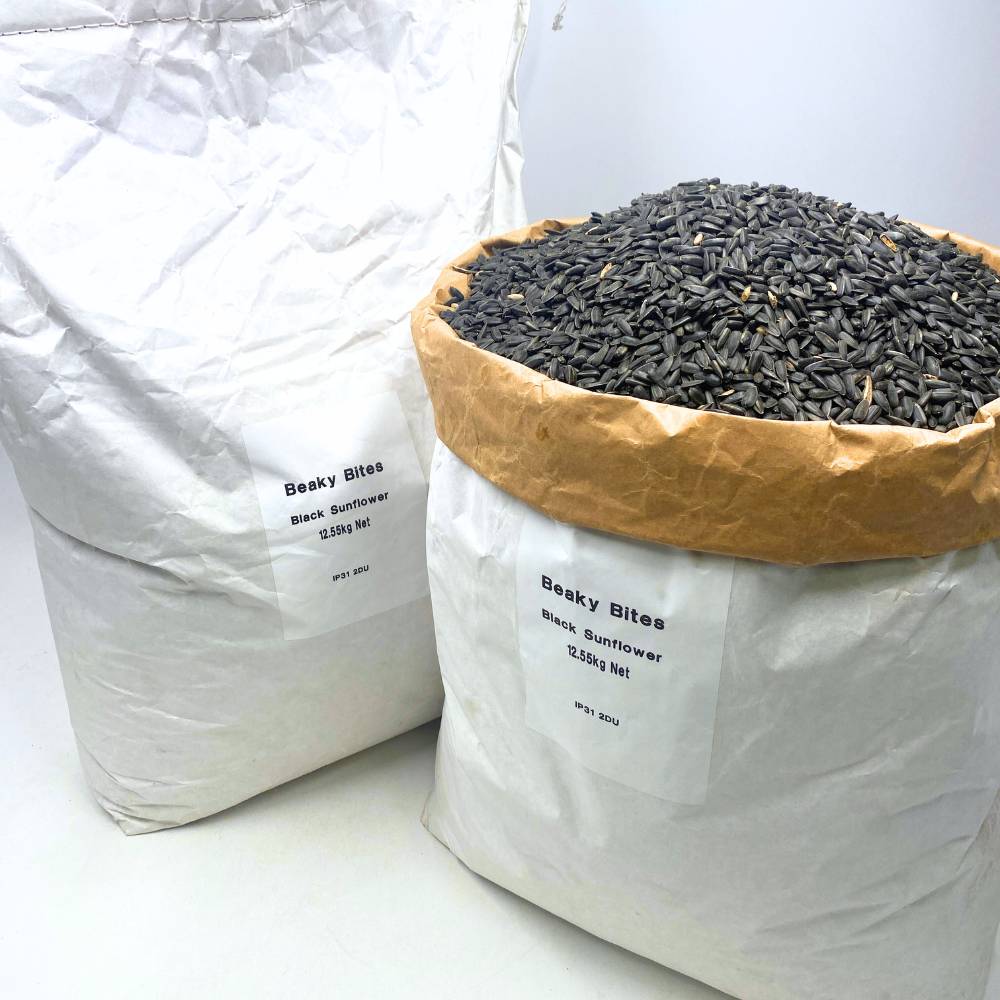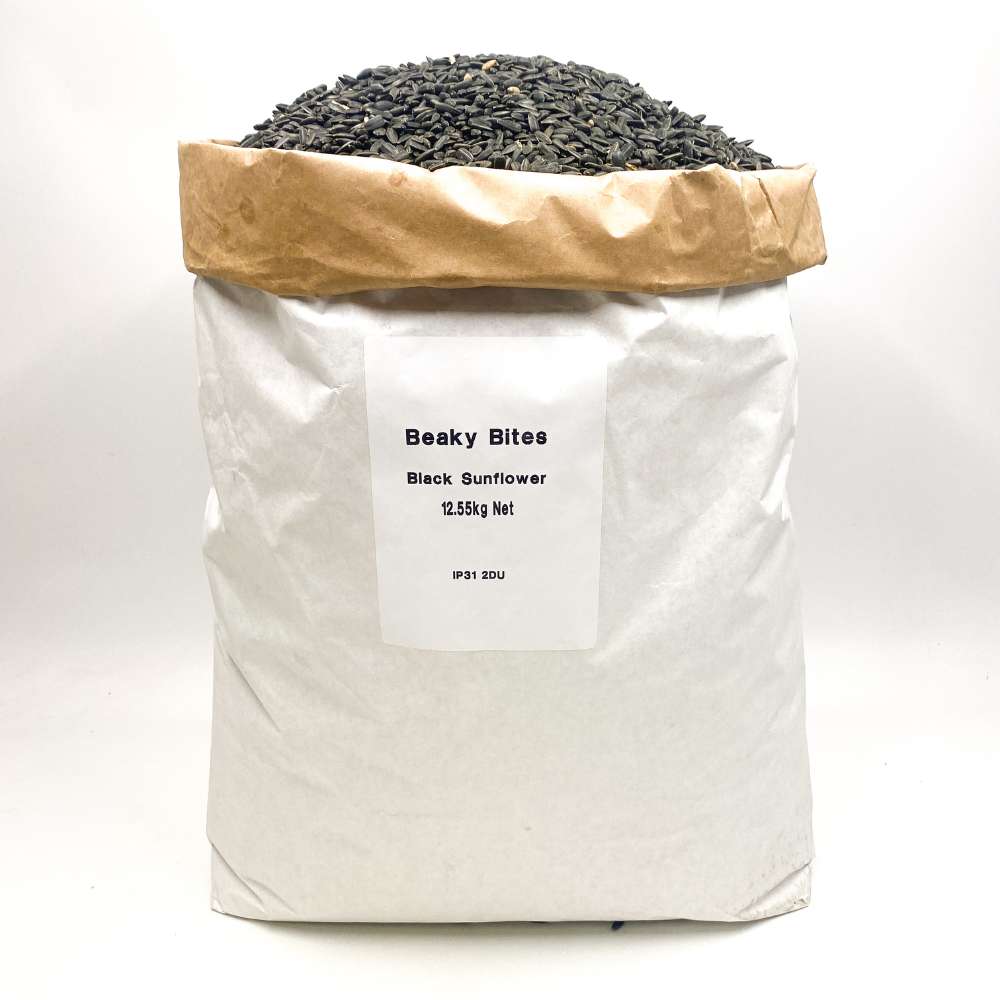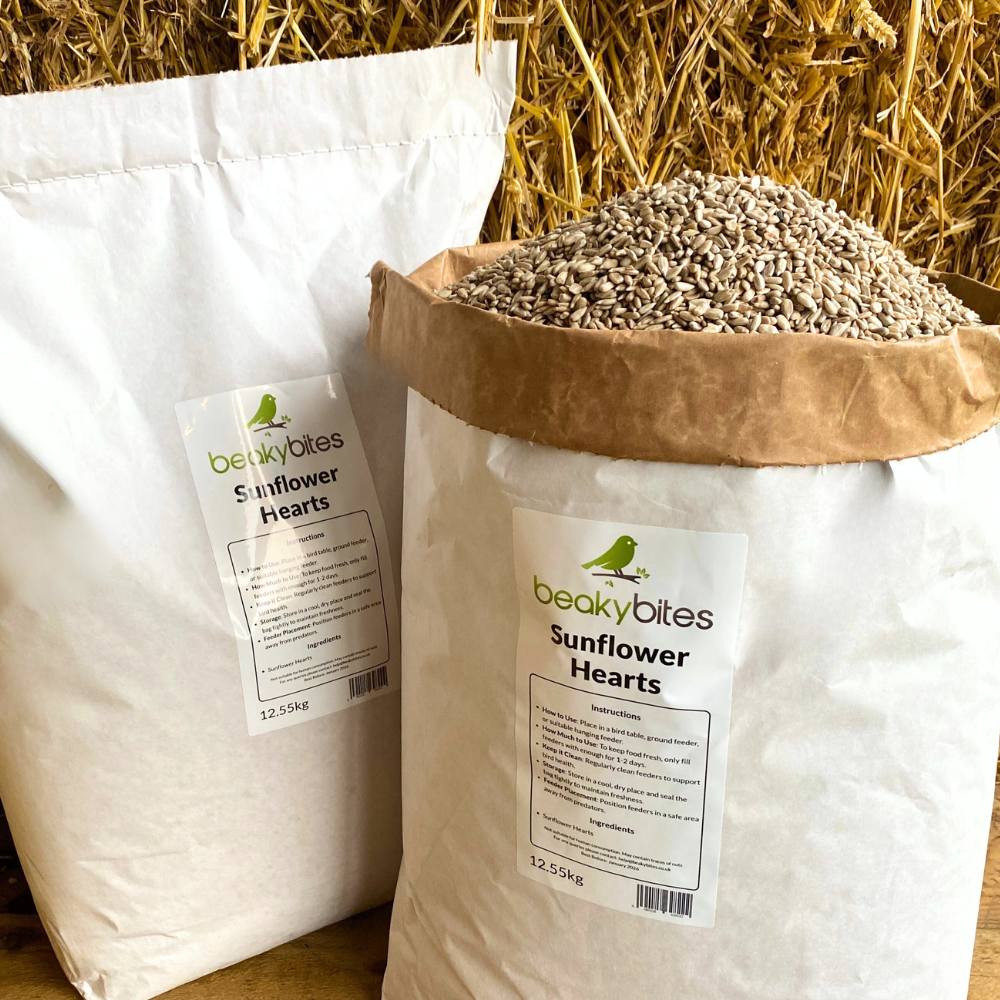Bird Fact File: Goldfinch

Welcome to our bird guide series brought to you by Beaky Bites! In each post, we'll take a closer look at a beloved UK garden bird to help you better understand and appreciate these amazing birds. From identifying distinct features to discovering their favourite foods and nesting habits, this series aims to provide an overview of our feathered wildlife.
Let's Meet the Goldfinch
Goldfinch Dove Fact File | |
|---|---|
| Size: | 12cm, head to tail |
| Wingspan: | 21-25cm |
| Weight: | 15-20g |
| Colours: | Brown, Black, White, Red and Yellow |
| Eggs: | 4-6 eggs per brood, 2-3 broods a year |
| Nesting: | High up, in thick tree branches, hedgerows and shrubs |
| Population Status: | Stable |
The goldfinch is a lovely bird, easy to spot with its red face, black and white head and golden yellow wing bars. It’s in gardens, parks and farmland where it eats seeds, especially thistles and teasels. Carduelis carduelis, it’s a finch, Fringillidae. A common sight in the UK with over a million breeding pairs.

Appearance and Behaviour
Goldfinches are beautiful birds with bright plumage. Males and females are the same, with a red face, black and white head, yellow wing bars and brown body. Juveniles lack the red face and have a more mottled brown colouring until they mature.
Goldfinches are seed eaters, they love thistle, teasel and dandelion seeds. In gardens they love niger and sunflower hearts and are often seen on hanging feeders designed for smaller birds. Their fine pointed beaks are perfect for extracting seeds from plants and feeders.
Goldfinches are social birds, often seen in flocks outside of breeding season. They are lively and active, perching in trees, flitting between feeders or foraging in open spaces. In gardens, parks and meadows they bring a splash of colour and a bit of fun. Their sweet tinkling call and chirping song is music to anyone's ears, a true bird lover’s delight.

Where do They Hang Out and Eat?
Goldfinches are opportunistic feeders and make the most of what’s around them all year round. In spring and summer they forage for seeds from dandelions, teasels and thistles to fuel the breeding season. You’ll see them on flower heads or flitting between shrubs, extracting seeds with their tiny beaks.
As autumn and winter arrive and natural food sources dwindle, goldfinches become regular visitors to garden feeders. They love nyjer seed and sunflower hearts which give them the energy to get through the winter. Being acrobatic they often cling to hanging feeders and bring a splash of colour and activity to any garden.
Goldfinches can be found in many habitats, gardens and parks, farmland and meadows. They like open spaces to forage and trees or shrubs to perch and rest. A garden with seed feeders and native plants like teasels and sunflowers will soon attract these beautiful birds. Their song and colours are a joy to have in any wildlife garden.

Breeding and Nesting
Goldfinches start breeding later in spring, from April onwards and can have 2 or 3 broods if conditions are good. A typical brood is 4-6 pale blue eggs which the female incubates for 12-14 days. Once hatched both parents work hard to feed them, providing a diet of seeds and small insects to help them grow fast. The young leave the nest after 14-17 days but are still dependent on their parents for a short while.
During breeding season goldfinches are less social as pairs are focused on defending their territory and raising their young. Their sweet tinkling song becomes a common sound as males court females and reinforce pair bonds. Once paired goldfinches form loose but often long lasting partnerships.
Their nests are small cup shaped structures made of grass, moss and cobwebs, often lined with soft materials like feathers for extra warmth. These delicate nests are usually built high in trees or hedges, hidden in the foliage to protect the eggs and chicks from predators. Despite their fragile appearance goldfinch nests are surprisingly strong and suitable for raising their young.

Attracting Them to Your Garden
Goldfinches love seeds, especially from plants like teasels, dandelions, and sunflowers, so if your garden has these natural food sources, they’ll be frequent visitors. You can attract even more goldfinches by planting native wildflowers and shrubs that produce seeds throughout the year. Hanging feeders filled with niger seed and sunflower hearts are especially appealing to goldfinches, particularly in the colder months when natural food is scarce.
Niger seed is a favourite of goldfinches, thanks to its small size and high oil content, which provides plenty of energy. Suet pellets and sunflower hearts are also great options to give them an extra energy boost in winter. Having a reliable food supply during autumn and winter helps goldfinches stay healthy when natural resources are limited. For a year-round solution, an All Season seed mix works well, offering a variety of seeds they would forage for in the wild.
Creating a bird-friendly garden with native plants, trees, and shrubs that provide food and shelter will encourage goldfinches to visit. They prefer open spaces for foraging and trees or bushes for resting and nesting. Adding a hanging feeder designed for smaller birds will make your garden even more appealing to these colourful visitors.
With a garden that includes seed-rich plants, feeders, and a welcoming habitat, goldfinches will thrive. Their bright colours and cheerful song bring so much joy to any outdoor space!

Conclusion
Goldfinches love gardens with plenty of seeds, native wildflowers, and shrubs to forage from, as well as trees or dense foliage to perch and nest. They thrive in open spaces for feeding and enjoy feeders stocked with nyjer seed, sunflower hearts, or suet. Add a hanging feeder designed for small birds, and you’ll soon have these vibrant visitors brightening your garden with their colourful plumage and cheerful song.
Whether you’re a seasoned bird enthusiast or new to garden wildlife, attracting goldfinches is a rewarding experience. Stay tuned for the next post!
Frequently Asked Questions
How can I attract goldfinches to my garden?
- Answer: You can attract goldfinches by offering niger seed and sunflower hearts in hanging feeders and planting seed-producing plants like teasels and sunflowers.
When do goldfinches breed, and how many broods do they have?
- Answer: Goldfinches breed from April onwards and can have up to three broods in a season if conditions are good.
Can goldfinches be found in urban areas or just rural ones?
- Answer: Goldfinches are adaptable and can be found in both urban and rural areas, as long as there’s access to food and trees or shrubs for nesting.
What plants can I grow to provide natural food for goldfinches?
- Answer: You can grow native wildflowers like teasels, dandelions, and sunflowers, which produce seeds goldfinches love.
Are goldfinches social birds or do they prefer to be alone?
- Answer: Goldfinches are social birds and are often seen in small flocks, especially outside the breeding season


